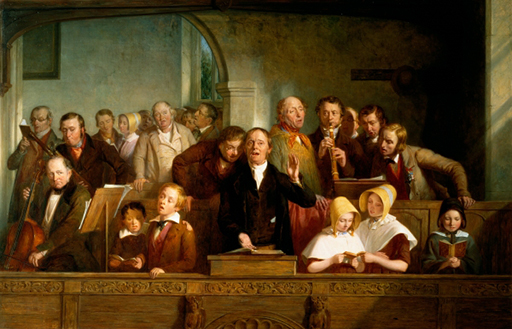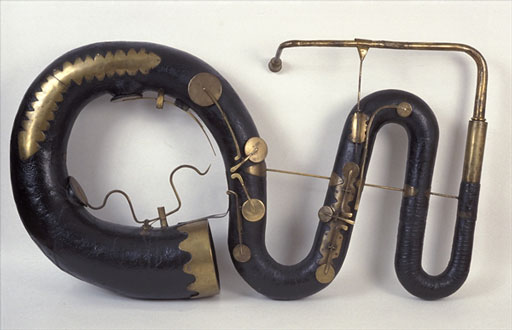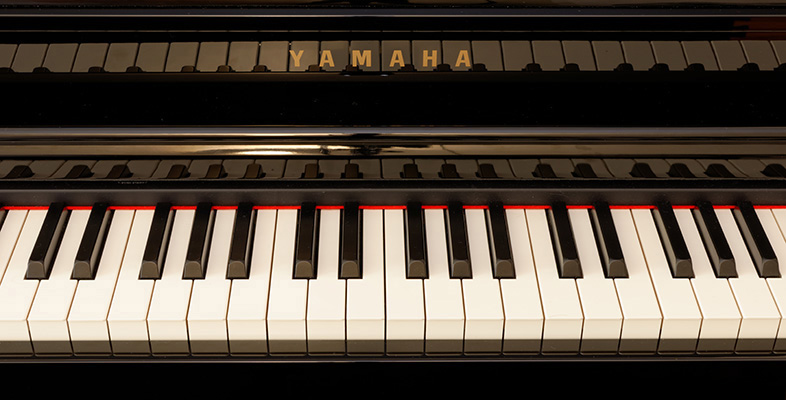3.12 West gallery music
Studying a particular topic nearly always involves combining a number of different resource types. This is the case with the tradition of English rural church music known as west gallery music, from the eighteenth- and early nineteenth-century custom of placing the choir in a gallery at the west end of the church. Often the singers were accompanied by a village band, comprising a mixture of string and wind instruments, whose function was both sacred and secular. During the nineteenth century, many of these wooden galleries were removed, often being replaced by an organ.
This repertory and its performance traditions can only be reconstructed by drawing on a mixture of resources: books of music (manuscript and printed), images, documents and surviving instruments.

The west gallery choir and band are perhaps most familiar through many passages in Thomas Hardy’s novels, in particular Under the Greenwood Tree (1872). Hardy’s grandfather had played the cello in the Puddletown church band, and later in the Stinsford choir. Indeed, the bands for both villages were made up entirely from members of the Hardy family, playing a mixture of clarinets, piccolo, bassoon and viols.
Activity 16
The Mellstock Band have constructed and recorded repertory from Dorset. Listen to ‘Kiss Me My Love and Welcome – Drops of Brandy 1 and 2’. The bass instrument that enters towards the end of the piece is the ‘serpent’, a frequent member of the west gallery band.

